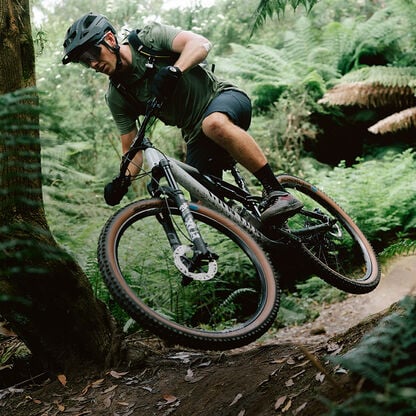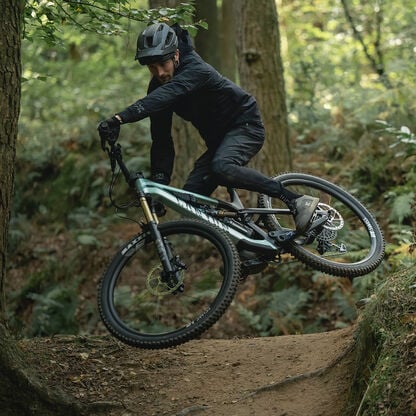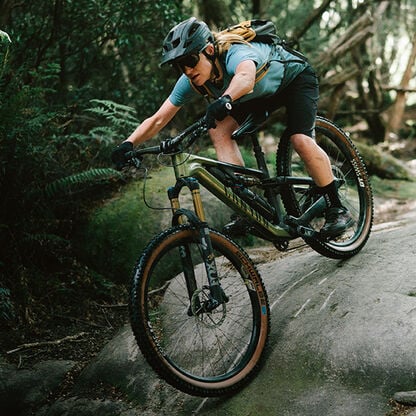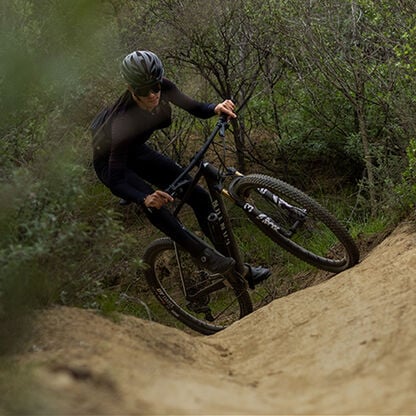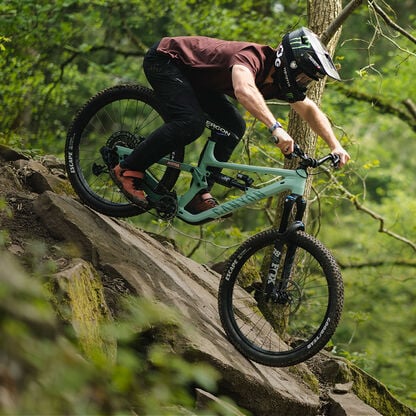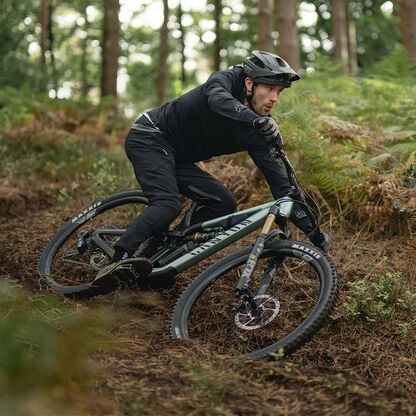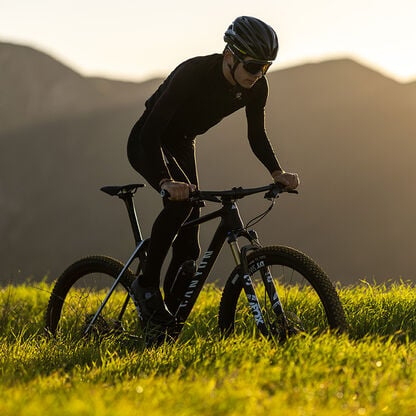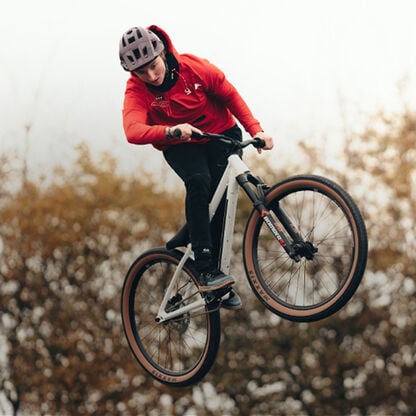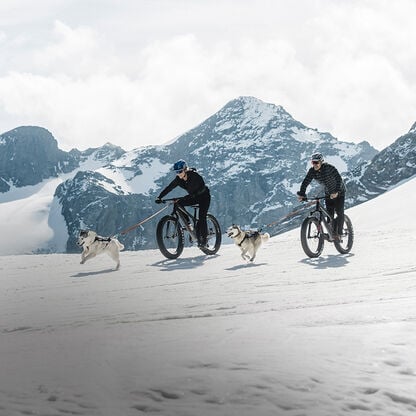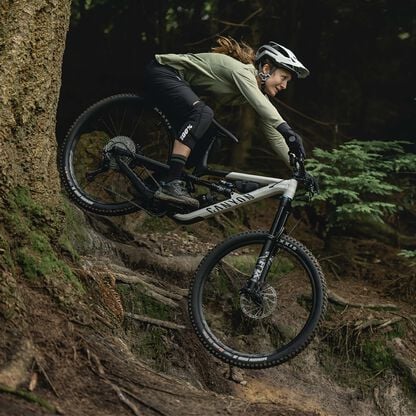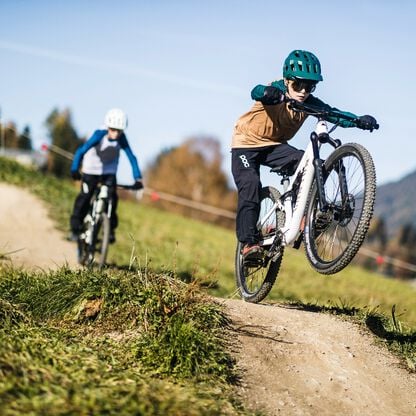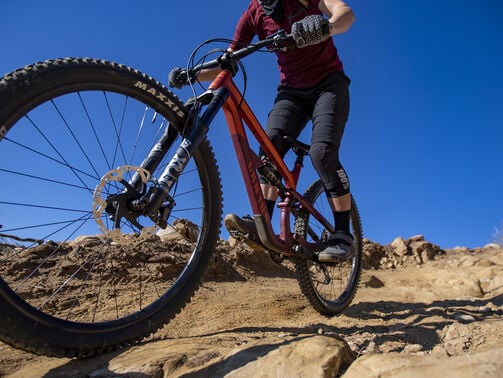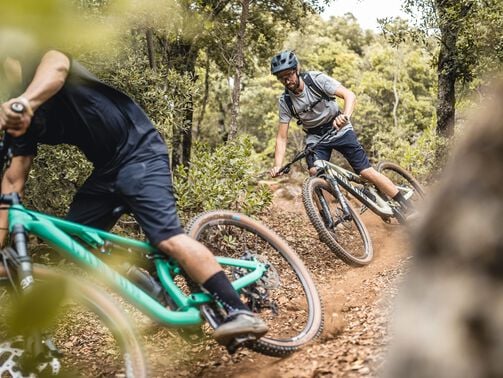Enduro or All-Mountain?
Enduro and all mountain bikes are true all-rounders. At first glance they are very similar. But the riding experience is different.

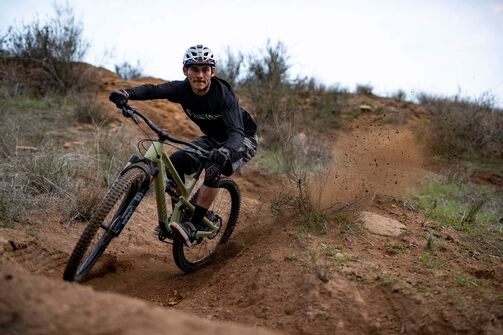
With an Enduro bike, you are opting for maximum downhill performance, speed, and big drops. An All-Mountain Bike is more moderate in this discipline. It handles uphill sections better while also having an advantage in all-round and touring performance. We explain the differences between the bikes and help you find the right mountain bike for you.
What distinguishes Enduro and All-Mountain bikes?
Over the years, Enduro bikes have become heavier. Bike designers have focused on improving performance in downhill riding. Massive suspension forks like the RockShox ZEB or the FOX 38 allow for daring jumps and high-speed descents. Enduro bikes excel in their stability and smoothness, but they are not lightweight and have lost some of their all-round properties.
That's why All-Mountain bikes have come into focus compared to Enduro MTBs. They offer an excellent compromise in combination with more moderate geometries and less suspension travel. Impressive climbing properties meet appealing downhill performance.
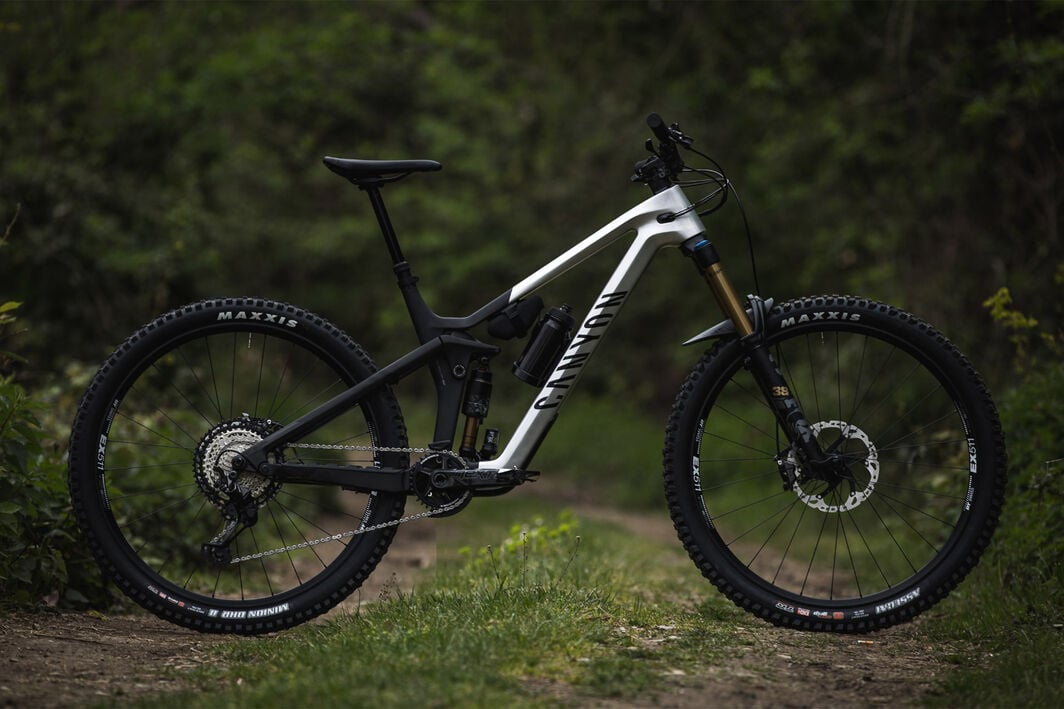
Application area of Enduro and All-Mountain
If you find yourself in alpine terrain, rocky descents, and require endurance during ascents, then an All-Mountain is the right bike for you.
All-Mountains are true all-rounders. The full-suspension bikes offer between 140 and 160 millimetres of suspension travel, a dropper seat post, a grippy tyre profile, and powerful brakes. Their strengths lie in descending. Models with generous 160 millimetres of suspension travel make them competitive with Enduro bikes when riding downhill. Hardtail All-Mountain bikes are particularly lightweight but have to make clear compromises in comfort and control on downhill sections.
You won't achieve the best times with an All-Mountain either during ascents or descents. However, the comfortable riding position and full-suspension options make long ascents bearable. In descending, All-Mountain bikes have great suspension travel, smoothness, and grip. With these features, the bike compensates for small mistakes while out on the trail.
On the other hand, an Enduro bike is well-equipped for technical trails and rapid descents with wide jumps. Downhill, these MTBs are unstoppable. The equipment includes:
- Durable, rough-tread tyres
- Massive suspension forks with up to 180 millimetres of travel
- A sturdy frame for fast descents
Enduro bikes are not uphill specialists. High-end models boast a lightweight carbon frame and components. An impressive example is the Canyon Spectral CFR, which weighs only 14.16 kilograms. The Canyon Strive CFR is a genuine Enduro Race Bike for record times in races. This uncompromising Enduro Race Bike is at the top of the Enduro World Series podiums. Our Gravity Bike Torque is designed for playful laps at the bike park, demanding downhill sections, and your personal freeride machine.
Enduro vs. All-Mountain: geometry and handling
The geometry of an Enduro or All-Mountain bike gives the bike unique handling. With Enduro bikes, the steering angle is flatter than with All Mountain bikes. As a result, the front wheel runs slightly further ahead, and the wheelbase increases. This improves the bike’s stability on tough descents. In combination with longer suspension travel, you can achieve high speeds in downhill sections. The longer wheelbase comes at the expense of the bike’s playfulness and agility.
If you're choosing between an All-Mountain or an Enduro mountain bike, pay attention to the position of the bottom bracket. The Enduro bike has a higher bottom bracket in Shred Mode, which provides more ground clearance in rough terrain. The longer wheelbase improves stability and straight-line performance on technically demanding terrain. In contrast, All-Mountain bikes have better cornering. The lower bottom bracket makes the bike agile and nimble.
With our Enduro Race Bike Strive CFR, the latest technology allows for adjusting the bike's geometry at the push of a button during the ride. The so-called Shapeshifter is installed on this Enduro MTB:
- The Shred Mode turns the bike into a downhill star with a flatter steering angle, longer wheelbase, and generous 160 millimetres of suspension travel.
- The Pedal Mode ensures optimal traction uphill. The suspension is tighter, and the rear suspension travel is reduced to 140 millimetres. In addition, the wheelbase is shortened, and the steering and seat angles are 1.5 degrees steeper.
You can switch between the two modes in seconds by pressing a button while riding.
All Mountain bikes have approached Enduro bikes in terms of geometry. Ten years ago, the steering angles were mostly 67 degrees. Today they are 64 degrees or less. The flat angle promises more smoothness and stability. Another similarity is the steep seat angle of the All Mountain bikes. This significantly improves the climbing behaviour of the bikes. You can pedal more efficiently uphill with a steeper seat angle and the front wheel is less likely to lose traction.
A newer trend in All Mountain bikes is to extend the rear suspension. Older bikes suffered from less manoeuvrability and agility. Today, lower centres of gravity and better-balanced bikes eliminate this. The latest All Mountain bikes prioritize a smoother riding experience and nimble handling, ensuring swift and easy changes in direction without compromising on weight.
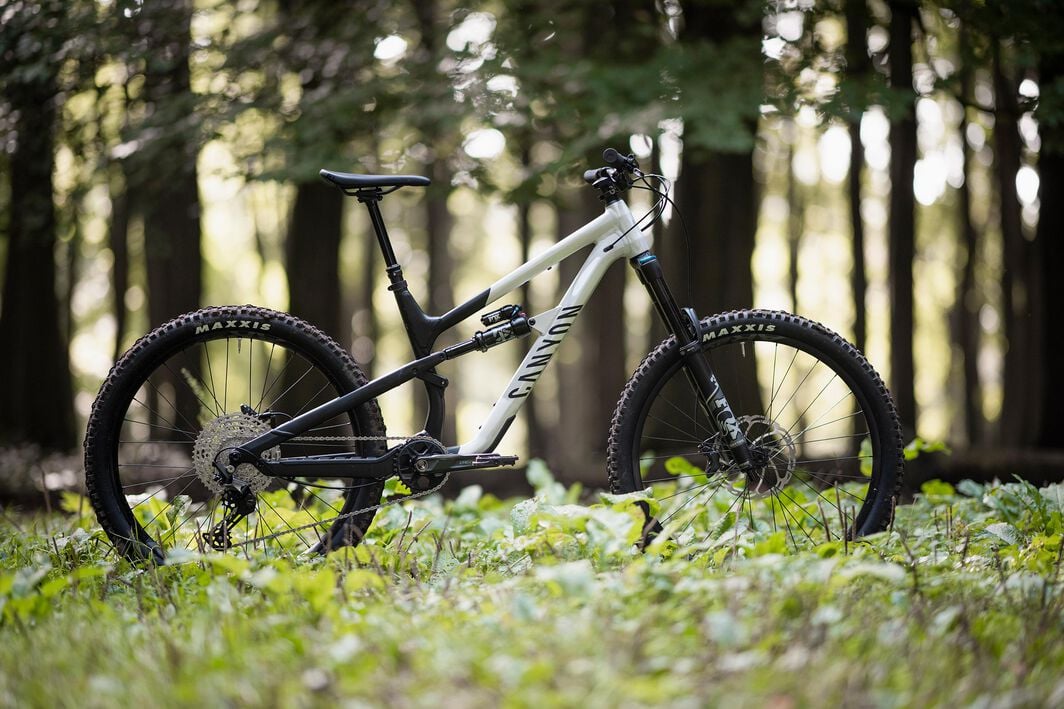
Which components fit Enduro or All-Mountain?
There are subtle nuances between the equipment on Enduro bikes and All-Mountain bikes. The components of an Enduro bike are designed for rapid descents in rough terrain. They must withstand larger forces during jumps and on rugged terrain. Some parts are therefore heavier but also more durable than the components on All-Mountain bikes. We provide an overview of where the bikes set priorities when choosing the components.
Aluminium handlebars with widths around 780 millimetres are common on both mountain bikes. A larger width brings more stability to a fast downhill trail with high jumps. Ergonomics and quality workmanship ensure a next-level feeling when you’re out on the trail.
Large brake discs with over 200 millimetres diameter give Enduro bikes and All Mountain bikes stronger braking power. Steep downhill sections promise breathtaking speed. To be able to stop the bike safely in any situation, the brakes must be strong.
Both MTB bike categories usually use 29-inch- or 27,5-inch wheels. Enduro bikes use mixed tyres for optimal grip on rough terrain. Slightly lighter tyres models with narrower widths (2.4 inches instead of 2.5 inches) are used on All Mountain bikes. The wheels on Enduro bikes and All Mountain bikes are designed for rough terrain and harder impacts. The downside is that the extra weight is noticeable during ascents.
Prices for Enduro and All-Mountain bikes
The price range is vast for both MTB categories. The costs depend on the frame material, weight, and quality of the components. Full-suspension All-Mountain MTBs with aluminium are available for around $2,000. Ultra-light models with carbon frames and top components will set you back even more.
The price for an entry-level Enduro bike is similar to that of All Mountain bikes. Top models with the best components are priced at the level of high-end All Mountain bikes.
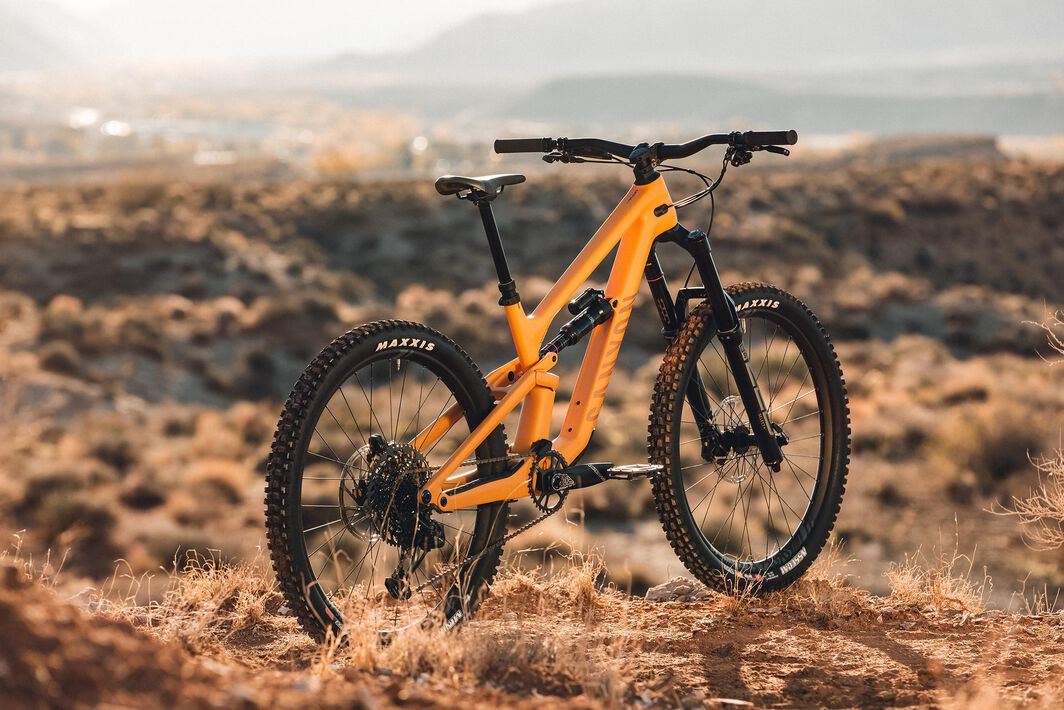
Enduro or All-Mountain: which MTB should I choose?
You'll notice the difference between All Mountain and Enduro bikes during a test ride. Visit us at Canyon Home, at bike events, or at Canyon Official Partners.
The All Mountain bike is the better all-rounder. It's ideal for quick descents and jumps on your local trails. An Alpine crossing is also possible with an All-Mountain bike. The bike is slightly lighter than an Enduro bike, especially the Hardtail All Mountain. However, it has less suspension travel and a rigid frame. Those who are not looking for the pure racing DNA will have a lot of fun on a hardtail.
Canyon All Mountain bikes
Are you the kind of do-it-all rider who mixes it up with those euphoric uphill ascents, sweet rough trails, and relaxed cross-country riding? Then the top-class quality Canyon All Mountain Bikes are ideal for your versatile style. Modern geometry, lightweight materials, wide handlebars, and the latest suspension technology mean you can conquer any terrain.
See the bikesIf you are more oriented towards record times downhill and want to participate in competitions, then an Enduro is the bike of your choice. These mountain bikes have racing in their DNA. Long suspension travel, robust frames, and components are designed for the fastest line downhill. They allow high-speed and spectacular jumps in difficult terrain. The higher weight becomes noticeable on longer ascents.
Canyon Enduro bikes
Efficient pedalling and fast technical descents. Enduro mountain bikes give you the best of both worlds with Canyon signature engineering and enough travel for the toughest trails.
See the bikesDiscover our Mountain Bikes
Did this article help?
Thank you for your feedback
